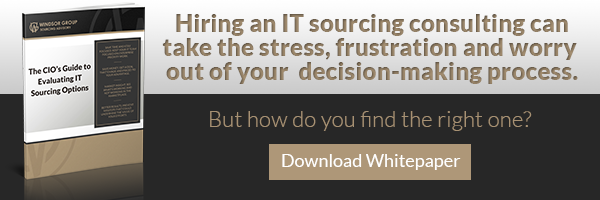
In order to succeed in today’s digital era, IT organizations must adopt a new way of thinking that embraces the next generation in technology. The world we live in today looks much different than it did 10 years ago, and as technology continues to evolve, so too will the progression of consumer behavior and the way businesses must adapt to meet market demands. Digital disruption has become a reality for the majority of modern enterprises, but many are struggling to find the right balance between operation and innovation.
The Foundation for Digital Success
IT plays a critical role in digital engagement, and having the proper alignment of IT with digital business initiatives is necessary to creating an environment that fosters and accelerates digital success. Although much of the digital conversation revolves around the need for enterprises to achieve greater levels of agility and flexibility within their infrastructure, the IBM z Systems™ mainframe remains the foundation for the majority of digital business applications.
Often used for bulk data processing such as enterprise resource planning (ERP) and transaction processing, mainframes are at the heart of the back-end for most digital enterprises. However, as the demands and expectations of both consumers and businesses change, traditional mainframe management approaches must change as well.
Why Mainframe Management Approaches Must Change
The rise of digital was inevitable, but the rate at which digital engagement has surfaced and the immediate impact it has had on modern enterprises is staggering.
Today’s consumers are more demanding than ever before. With the growing need for instant gratification, consumers expect to have product and service information to be readily available and accessible, to interact with businesses at their convenience and in their form of preference, to have an immediate response to any and all inquiries, and to receive goods and services at the highest value, or lowest cost, possible. In addition, customer loyalty is a thing of the past, so if a business cannot meet these demands, consumers will take their business elsewhere with zero hesitation.
Not only has this drastically changed the competitive landscape, but it has also been cause for businesses to significantly alter their internal operations, processes, and structure. With the growing need to reduce costs, minimize risk, improve time-to-market, achieve greater economies of scale, and improve the customer experience, modern enterprises have been challenged with exceeding consumer expectations while effectively supporting business initiatives.
With that said, the existing approaches to mainframe operations management are too slow, too reactive, too costly, and too reliant of the expertise of mainframe technicians to effectively support digital transformation.
Mainframe Management in the Digital Era
Modern mainframe management requires organizations to focus their efforts on the areas most affected by digital engagement; data, infrastructure, and cost.
-
Data
Organizations have begun to realize the major business and competitive advantage that can be gained from leveraging social, mobile, analytic, and cloud computing (SMAC) platforms. However, while these digital channels offer a vast amount on consumer data, they also require organizations to employ the necessary resources to aggregate, process, manage, and access the data faster than ever before, or run the risk of losing customers to a competitor.
-
Infrastructure
Today’s digital world delivers substantial benefits to consumers and businesses alike. With the ability to do whatever we need or want – anywhere – at any time, we’re able to stay in constant connection. However, the impact this has on infrastructure management is equally as substantial. The types of transactions and the increased workload volumes caused by digital engagement will no longer fit the patterns IT has learned to recognize and understand over the past 30 years, and the tolerance for slow performance will be extremely low.
-
Cost
As discussed, organizations pursuing digital transformation must achieve greater levels of organizational and operational agility in order to meet growing customer demands. However, it is important to recognize that these efforts often have a great impact on the number of transactions driven through to the back end of the mainframe. Meaning, modern enterprises must allocate more of their IT budget towards new business applications that will accommodate demands, and process more transactions – more frequently—without increasing costs. This makes effectively managing and optimizing mainframe costs a top priority for IT leaders.
As the need to accommodate digital demands grows and the need to optimize mainframe costs becomes increasingly important, many enterprises have turned to mainframe outsourcing as the solution. Mainframe outsourcing allows organizations to pursue digital transformation in a way that alleviates the costs associated with effectively processing and managing higher volumes of data and transactions, improves digital scalability, and drives stronger service levels and results.


